- Clone
- FN50 (See other available formats)
- Regulatory Status
- RUO
- Workshop
- IV A91
- Other Names
- Very Early Activation Antigen (VEA), Activation inducer molecule (AIM)
- Isotype
- Mouse IgG1, κ
- Ave. Rating
- Submit a Review
- Product Citations
- publications
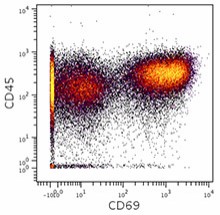
-

Human PBMCs were incubated for 6 hours in media alone (bottom) or with PMA and Ionomycin (top) in the presence of monensin and brefeldin A. Cells were then fixed, permeabilized, and stained with 154Sm-anti-CD45 (HI30) and 162Dy-anti-CD69 (FN50). Data provided by DVS Sciences. -

| Cat # | Size | Price | Quantity Check Availability | Save | ||
|---|---|---|---|---|---|---|
| 310939 | 100 µg | 104€ | ||||
CD69 is a 27-33 kD type II transmembrane protein also known as activation inducer molecule (AIM), very early activation antigen (VEA), and MLR3. It is a member of the C-type lectin family, expressed as a disulfide-linked homodimer. Other members of this receptor family include NKG2, NKR-P1 CD94, and Ly49. CD69 is transiently expressed on activated leukocytes including T cells, thymocytes, B cells, NK cells, neutrophils, and eosinophils. CD69 is constitutively expressed by a subset of medullary mature thymocytes, platelets, mantle B cells, and certain CD4+ T cells in germinal centers of normal lymph nodes. CD69 is involved in early events of lymphocyte, monocyte, and platelet activation, and has a functional role in redirected lysis mediated by activated NK cells.
Product DetailsProduct Details
- Verified Reactivity
- Human
- Reported Reactivity
- African Green, Baboon, Chimpanzee, Cynomolgus, Pigtailed Macaque, Rhesus
- Antibody Type
- Monoclonal
- Host Species
- Mouse
- Formulation
- Phosphate-buffered solution, pH 7.2, containing 0.09% sodium azide and EDTA.
- Preparation
- The antibody was purified by affinity chromatography.
- Concentration
- 1.0 mg/ml
- Storage & Handling
- The antibody solution should be stored undiluted between 2°C and 8°C.
- Application
-
FC - Quality tested
CyTOF® - Verified - Recommended Usage
-
This product is suitable for use with the Maxpar® Metal Labeling Kits. For metal labeling using Maxpar® Ready antibodies, proceed directly to the step to Partially Reduce the Antibody by adding 100 µl of Maxpar® Ready antibody to 100 µl of 4 mM TCEP-R in a 50 kDa filter and continue with the protocol. Always refer to the latest version of Maxpar® User Guide when conjugating Maxpar® Ready antibodies.
- Application Notes
-
Additional reported applications (for the relevant formats) include: immunohistochemical staining of acetone-fixed frozen tissue sections2, immunofluorescence microscopy3, and spatial biology (IBEX)8,9.
- Additional Product Notes
-
Maxpar® is a registered trademark of Standard BioTools Inc.
- Application References
-
- Knapp WB, et al. 1989. Leucocyte Typing IV. Oxford University Press. New York.
- Sakkas LI, et al. 1998. Clin. and Diag. Lab. Immunol. 5:430. (IHC)
- Kim JR, et al. 2005. BMC Immunol. 6:3. (IF)
- Verjans GM, et al. 2007. P. Natl. Acad. Sci. USA 104:3496.
- Lu H, et al. 2009. Toxicol Sci. 112:363. (FC) PubMed
- Thakral D, et al. 2008. J. Immunol. 180:7431. (FC) PubMed
- Yoshino N, et al. 2000. Exp. Anim. (Tokyo) 49:97. (FC)
- Radtke AJ, et al. 2020. Proc Natl Acad Sci USA. 117:33455-33465. (SB) PubMed
- Radtke AJ, et al. 2022. Nat Protoc. 17:378-401. (SB) PubMed
- Product Citations
-
- RRID
-
AB_2562827 (BioLegend Cat. No. 310939)
Antigen Details
- Structure
- C-type lectin, type II glycoprotein, 28/32 kD
- Distribution
-
Activated T cells, B cells, NK cells, granulocytes, thymocytes, platelets, Langerhans cells
- Function
- Lymphocyte, monocyte, and platelet activation, NK cell killing
- Cell Type
- B cells, Granulocytes, Langerhans cells, NK cells, Platelets, T cells, Thymocytes, Tregs
- Biology Area
- Costimulatory Molecules, Immunology
- Molecular Family
- CD Molecules
- Antigen References
-
1. Schlossman S, et al. Eds. 1995. Leucocyte Typing V. Oxford University Press. New York.
2. Testi R, et al. 1994. Immunol. Today 15:479. - Gene ID
- 969 View all products for this Gene ID
- UniProt
- View information about CD69 on UniProt.org
Related FAQs
- Can I obtain CyTOF data related to your Maxpar® Ready antibody clones?
-
We do not test our antibodies by mass cytometry or on a CyTOF machine in-house. The data displayed on our website is provided by Fluidigm®. Please contact Fluidigm® directly for additional data and further details.
- Can I use Maxpar® Ready format clones for flow cytometry staining?
-
We have not tested the Maxpar® Ready antibodies formulated in solution containing EDTA for flow cytometry staining. While it is likely that this will work in majority of the situations, it is best to use the non-EDTA formulated version of the same clone for flow cytometry testing. The presence of EDTA in some situations might negatively affect staining.
- I am having difficulty observing a signal after conjugating a metal tag to your Maxpar® antibody. Please help troubleshoot.
-
We only supply the antibody and not test that in house. Please contact Fluidigm® directly for troubleshooting advice: http://techsupport.fluidigm.com/
- Is there a difference between buffer formulations related to Maxpar® Ready and purified format antibodies?
-
The Maxpar® Ready format antibody clones are formulated in Phosphate-buffered solution, pH 7.2, containing 0.09% sodium azide and EDTA. The regular purified format clones are formulated in solution that does not contain any EDTA. Both formulations are however without any extra carrier proteins.
Other Formats
View All CD69 Reagents Request Custom ConjugationCustomers Also Purchased
Compare Data Across All Formats
This data display is provided for general comparisons between formats.
Your actual data may vary due to variations in samples, target cells, instruments and their settings, staining conditions, and other factors.
If you need assistance with selecting the best format contact our expert technical support team.
-
Purified anti-human CD69
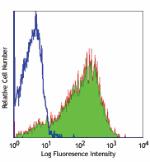
PHA-activated human peripheral blood lymphocytes stained wit... -
FITC anti-human CD69
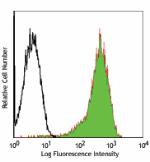
PMA + ionomycin stimulated (6 hours) human lymphocytes stain... -
PE anti-human CD69
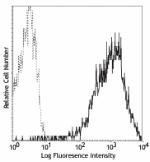
PMA + ionomycin stimulated (6 hours) human lymphocytes stain... -
PE/Cyanine5 anti-human CD69
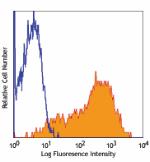
PHA-activated human peripheral blood lymphocytes stained wit... -
APC anti-human CD69

PMA+ionomycin-stimulated (5hours) human peripheral blood lym... -
APC/Cyanine7 anti-human CD69

PMA + Ionomycin stimulated (6 hours) human peripheral blood ... -
PE/Cyanine7 anti-human CD69

PMA+ionomycin activated human peripheral blood lymphocytes s... -
Alexa Fluor® 488 anti-human CD69
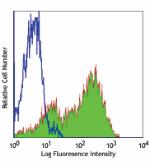
PMA+ionomycin activated human peripheral blood lymphocytes s... -
Alexa Fluor® 647 anti-human CD69
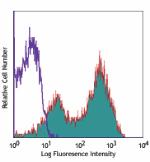
PMA+ionomycin activated human peripheral blood lymphocytes s... 
Confocal image of human lymph node sample acquired using the... 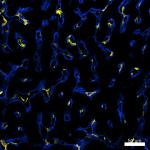
Confocal image of human liver sample acquired using the IBEX... -
Pacific Blue™ anti-human CD69

PMA+ionomycin-stimulated human peripheral blood mononuclear ... -
Alexa Fluor® 700 anti-human CD69
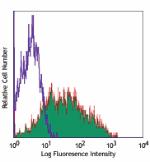
PMA + Ionomycin-stimulated (5 hours) human peripheral blood ... -
Biotin anti-human CD69

PHA-stimulated human peripheral blood mononuclear cells (day... -
PerCP/Cyanine5.5 anti-human CD69

PMA+ ionomycin stimulated (6 hours) human peripheral blood l... -
PerCP anti-human CD69

PMA + Inonomycin-stimulated (5 hours) human peripheral blood... -
Brilliant Violet 421™ anti-human CD69

Human peripheral blood lymphocytes were stimulated with PMA ... -
Brilliant Violet 785™ anti-human CD69
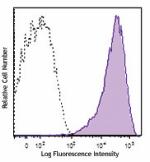
Human peripheral blood lymphocytes were stimulated with PMA ... -
Brilliant Violet 650™ anti-human CD69
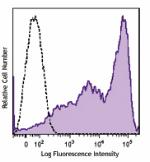
PMA + ionomycin-stimulated (6 hours) human peripheral blood ... -
Brilliant Violet 510™ anti-human CD69
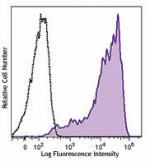
Human peripheral blood lymphocytes were stimulated with PMA+... -
Brilliant Violet 605™ anti-human CD69
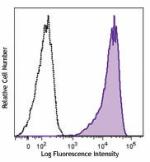
PMA+ ionomycin-stimulated (6 hours) human periphe... -
Purified anti-human CD69 (Maxpar® Ready)

Human PBMCs were incubated for 6 hours in media alone (botto... 
-
PE/Dazzle™ 594 anti-human CD69
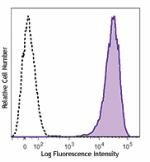
PMA + ionomycin-stimulated (6 hours) human peripheral blood ... -
Brilliant Violet 711™ anti-human CD69
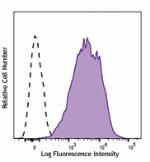
PMA + ionomycin-stimulated (six hours) human peripheral bloo... -
APC/Fire™ 750 anti-human CD69
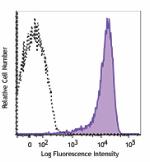
Human peripheral blood lymphocytes were stimulated with PMA ... -
TotalSeq™-A0146 anti-human CD69
-
TotalSeq™-B0146 anti-human CD69
-
TotalSeq™-C0146 anti-human CD69
-
Brilliant Violet 750™ anti-human CD69

PMA+ ionomycin stimulated (6 hours) human peripheral blood l... -
KIRAVIA Blue 520™ anti-human CD69

PMA + ionomycin stimulated human peripheral blood lymphocyte... -
Spark NIR™ 685 anti-human CD69 Antibody

Human peripheral blood lymphocytes were stimulated with PMA+... -
PE/Fire™ 640 anti-human CD69

PMA+ionomycin activated human peripheral blood lymphocytes w... -
Spark YG™ 581 anti-human CD69

PMA+ionomycin activated human peripheral blood lymphocytes w... -
TotalSeq™-D0146 anti-human CD69
-
APC anti-human CD69

Typical results from Cell Activation Cocktail (without Brefe... -
Spark Blue™ 550 anti-human CD69
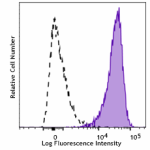
Human peripheral blood lymphocytes were stimulated with PMA... -
PE anti-human CD69

Typical results from Cell Activation Cocktail (without Brefe... -
Spark Red™ 718 anti-human CD69

PMA+ ionomycin stimulated (6 hours) human peripheral blood l... -
GMP PE anti-human CD69

Typical results from Cell Activation Cocktail (without Brefe... -
PE/Fire™ 810 anti-human CD69

PMA+ ionomycin stimulated (6 hours) human peripheral blood l...
 Login / Register
Login / Register 










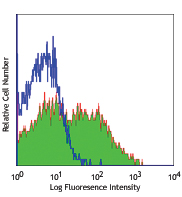
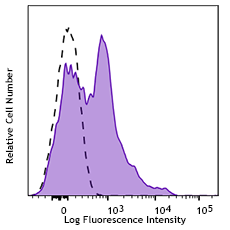
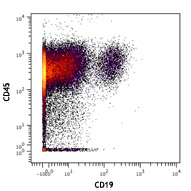




Follow Us